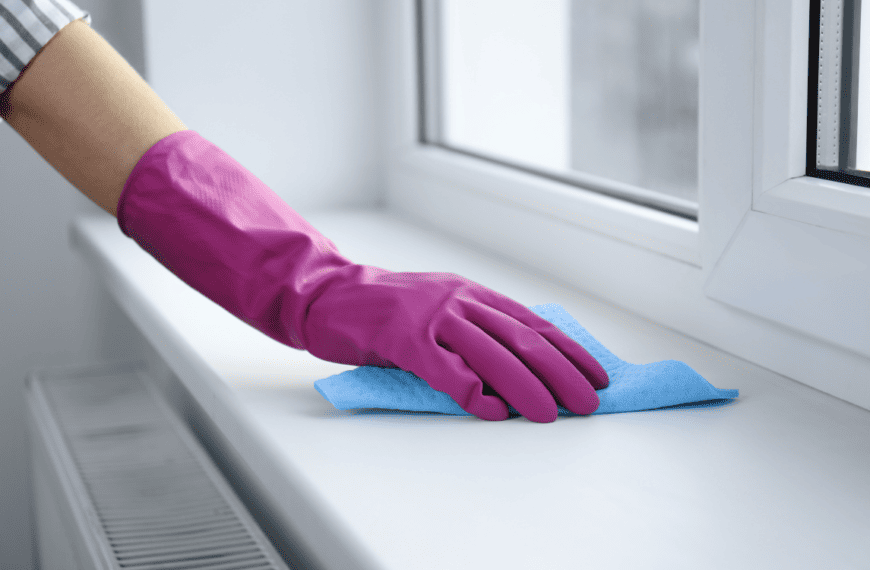If there’s a superhero among a home chef’s array of utensils, it has to be the cast iron skillet. Cast iron is non-stick, durable, and equally at home on the stovetop as it is in the oven, creating a world of convenient dinnertime possibilities.
Not to mention, cast iron is almost indestructible. With proper care, you can make your favorite skillet a proud part of your legacy to pass down to future generations.
But like any good superhero, cast iron has its glaring weakness. Surprisingly, the kryptonite to this otherwise invincible material is a standard cleaning routine. If you soak your cast iron after each use, or worse still, run it through the dishwasher, it will turn into a rusty mess in no time.
Maintaining cast iron is a unique process that can sometimes be counterintuitive. But with a thoughtful approach, it’s an easy process too. We’ll break down everything you need to know about cleaning and caring for new cast iron, so you can enjoy it for decades to come.
You may also like:
Can You Put Cast Iron in the Dishwasher?
What is The Best Oil to Season a Cast Iron Skillet: 8 Options
How To Clean Black Residue Off Cast Iron Skillet (5 Quick Ways)
How to Store a Cast Iron Skillet: 8 Best Tips
Prepping a New Cast Iron Skillet
Whether you inherit your cast iron skillet or buy it new, you need to do a quick cleaning before you start using it. Use hot water with a touch of soap and scrub off any production residue, dirt, or adhesive from labels.
Many new cast iron skillets come pre-seasoned from the factory, but you should still give these a wipedown as well. Rinse them in hot water without soap to keep the factory seasoning but remove any unwanted gunk.
After washing, pat your skillet dry with a clean towel. You need to keep even the smallest amount of moisture from sitting too long on your cast iron.
Seasoning a Cast Iron Skillet
The secret to cast iron is seasoning, the built-up non-stick coating. Seasoning involves baking in several layers of oil, causing a polymerization process that bonds the oil molecules together. The result is a hardened, plastic-like coating that protects the metal from oxidation and prevents food from sticking.
Whether it’s used or brand new, unfinished or pre-seasoned, you should season your cast iron skillet before its first use. You can use almost any kind of fat or lard, but oils high in unsaturated fat work best for those initial layers of seasoning.
Try any of these cooking oils to start seasoning your pan:
- Vegetable oil
- Shortening
- Canola oil
- Corn oil
- Grapeseed oil
- Flaxseed oil
A well-seasoned pan achieves complete polymerization and carbonization of the oils. The coat will be smooth, glassy, and dark, free of any sticky spots.
7 Steps to a Seasoned Skillet
If the oil does not polymerize completely, it can turn rancid, making the skillet unusable until you wash and re-season it. For the oil to polymerize, it needs to be heated slightly above its smoke point.
Pay attention to the oil you’re using and preheat your oven based on its smoke point. In general, heating your oven between 400-500 degrees will work.
Once your oven is preheated, follow these steps to season your skillet:
- Pour 1-2 tablespoons of oil in the skillet
- Use a paper towel to coat the entire surface, including the inside, outside, and handle
- Buff the oil into a thin layer so there are no drops or pools
- Place the skillet upside down on the middle rack of the preheated oven
- Position a foil-lined sheet under the skillet to catch drips
- Bake for 30-60 minutes
- Let cool and repeat the process 2-3 times
Once you have seasoned the pan a few times, it should look smooth and shiny but not greasy. It’s now ready to use.
Use Your Skillet
After your initial seasoning, you can go a long time before you have to go through the process again. The reason is that you season the skillet every time you cook with fat or oil. So, the best way to maintain your cast iron skillet is to use it as often as possible!
Over time, your skillet will build a healthy coat that will be difficult to remove, even with soap. But when you first start using your skillet, you’ll need to limit the kinds of foods you cook to protect the seasoning. Avoid using acidic ingredients like lemon, tomato sauce, wine, or vinegar until your cast iron has established a decent layer of seasoning.
What else should you not cook with your cast iron skillet?
Although they’ll be fine to cook eventually, foods that typically stick, like eggs, are a nuisance to remove from the pan during the first several uses. At the same time, foods like garlic and seafood can leave lingering odors and flavors that might show up in later meals.
Watching what you cook is crucial, but you also need to pay attention to how you cook it. Cast iron is incredible at holding heat, but it doesn’t heat evenly. Always preheat your skillet before adding your food to get the entire skillet hot.
Cleaning a Seasoned Skillet
There are several approaches to cleaning a seasoned skillet. You’ll want to choose the right one based on the amount of seasoning on the skillet and the level of cleaning it needs. In some instances, a wipedown with a paper towel or cloth is sufficient.
To break off stuck-on grime, you can scour the skillet with salt. Pour a generous amount in your pan and rub it around with a towel to scrub away messes.
For the worst cleaning jobs, you can use warm water and mild dish soap. Even though soap wears down the coating, a well-used pan will have enough seasoning to handle the clean. With that said, there are still a few critical rules to follow to protect your skillet.
Never Soak Cast Iron
Water is cast iron’s worst enemy, so you need to reduce exposure as much as possible. Soaking it may loosen food, but it almost guarantees that rust will develop.
Dry Quickly and Thoroughly
Always dry your cast iron thoroughly before storing it. A helpful trick is to put it on a hot burner for a few minutes to evaporate any leftover moisture. Before storing it, line the pan with a paper towel as a final layer of moisture protection.
Add Oil After Washing
To restore seasoning after washing with soap, coat the inside of the pan with a thin layer of oil. Place it on a hot burner for several minutes until the oil sets.
Recovering From Rust
It’s not the end of the world if your skillet develops some rust. Cast iron is resilient, and like cleaning baking sheets, this is where a little extra scrubbing power goes a long way.
Use steel wool with soap and water to grind away rust until you reach unfinished cast iron. After all of the rust is gone, immediately wash, dry, and re-season your skillet like you just bought it.
Keep It Simple with a Dependable Cleaning Service
Cast iron demands care, but it can forever change how you cook if you treat it well. By following these tips on caring for cast iron and using it as much as possible, you can keep your cookware in pristine condition without even trying.
We know that good advice doesn’t always solve the cleaning problem, and sometimes you need a little assistance. If you’re dealing with too many dishes, loads of laundry, or a never-ending stream of tidying opportunities, we can set you up with the perfect cleaning service in only a few simple steps. Get started on a booking today to get help with your cast iron cookware and much more!









